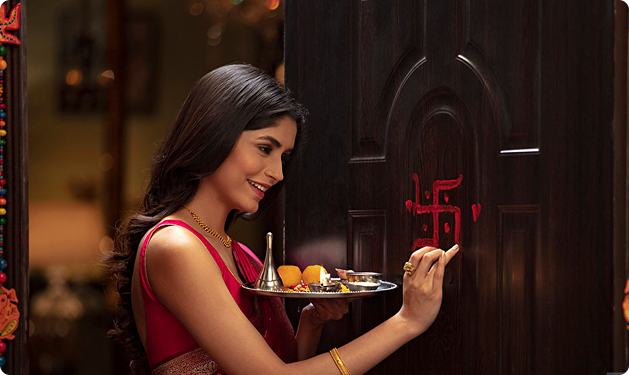Satyanarayan Puja: A Simple Ritual For Prosperity And Blessings At Home
Sep 11, 2025

Durga Puja is one of the most colorful, joyful, and widely celebrated festivals. For Indians, this Puja is more than a religious festival. It is a time of togetherness and cultural pride. Streets are decorated with lights, pandals (decorated structures where Goddess Durga is worshiped) become centers of art and devotion, and families gather to celebrate with food, fashion, and music. If you are searching for the Durga Puja 2025 date, mark your calendars: the celebrations will start from September 28 and end on October 2, with Mahalaya falling on September 21. Let's know about this festival through this blog.
Durga Puja holds a profound meaning in Indian culture. It symbolises the victory of good over evil. Goddess Durga is seen as a symbol of strength, power, and protection. She is the mother who protects her children from harm and guides them towards the truth.
For many people, Durga Puja is not just a festival but also a reminder to fight against their own inner weaknesses, fears, and negativity. Just as Goddess Durga defeated the demon Mahishasura, humans too can defeat their problems with courage, unity, and determination.
The festival also celebrates Shakti, or feminine power, showing respect to women and their role in balancing life and society.
The roots of Durga Puja go back to a famous mythological story. Long ago, Mahishasura, a demon with the power to change shapes, became very strong and started troubling both gods and humans. None of the gods could defeat him because he had received a boon that no man or god could kill him.
In their desperation, the gods combined their powers and created Goddess Durga. She was gifted with weapons from all the gods: Shiva gave her a trident, Vishnu gave her a discus, Varuna gave her a conch, and many others offered their blessings.
Mounted on a lion, Goddess Durga fought Mahishasura for nine long days and nights. Finally, on the tenth day, she killed him. This victory is why Durga Puja is celebrated as a tribute to her bravery, power, and divine strength.
Durga Puja and Navratri are connected festivals. Both honor the Goddess, but the way they are celebrated is a little different.
Even though the styles differ, the emotion is the same: worship of the Goddess and celebration of her divine power. This makes Durga Puja not just a regional but a truly national festival.
Durga Puja is spread over 10 days, and each day has its own special meaning.
Durga Puja is also a festival of art and creativity. Months before the celebrations, artisans start working on clay idols of Goddess Durga and her children, Saraswati, Lakshmi, Kartik, and Ganesha.
In Kumartuli, Kolkata, India, artists fill the lanes with half-made idols, patiently painting details and adding finishing touches of ornaments and colors. The entire process of idol-making is considered sacred.
In recent times, artisans have also started making eco-friendly idols using clay, natural colors, and biodegradable materials, so that when immersed, they do not harm rivers or seas. This blend of devotion and responsibility makes the festival even more meaningful.
Durga Puja is a festival of colors, and each has a special meaning:
Every day of Navratri and Durga Puja is associated with a particular color. People love to dress up according to the day's color, which adds charm and unity to the celebrations. Women wear traditional sarees, men wear kurtas, and youngsters often try Indo-Western outfits to mix tradition with modern style.
Durga Puja is no longer limited to India. Today, it is celebrated across the world by Indian communities living abroad. From London to New Jersey, Singapore to Sydney, Durga Puja brings people together with the same joy and devotion.
Different community groups decorate the halls and organize cultural shows, and food stalls offer Bengali dishes during Durga Puja. For many people living far away from home, the celebration of this Puja provides a sense of belonging and a way to reconnect with their culture. It has become a truly global festival of unity.
Durga Puja is not only a festival or a celebration, it's about the cultural and traditional significance of India. People from different cultures celebrate this festival together. This year, celebrate this Puja with lots of happiness. Take part in rituals like Maha Ashtami, enjoy bhog, dress up in festive outfits, or share your wishes online. Get ready to enjoy the magic of Durga Puja, the celebration of faith, art, food, fashion, and endless happiness.
